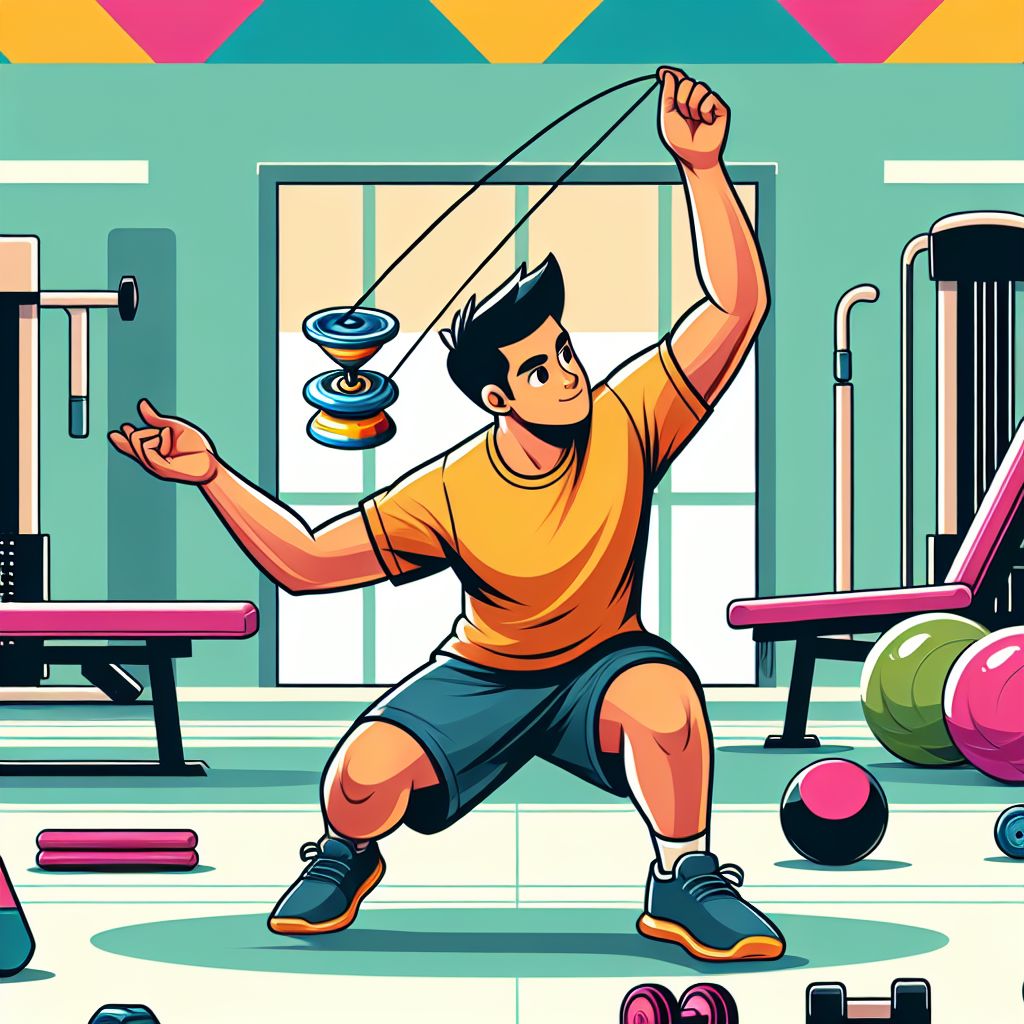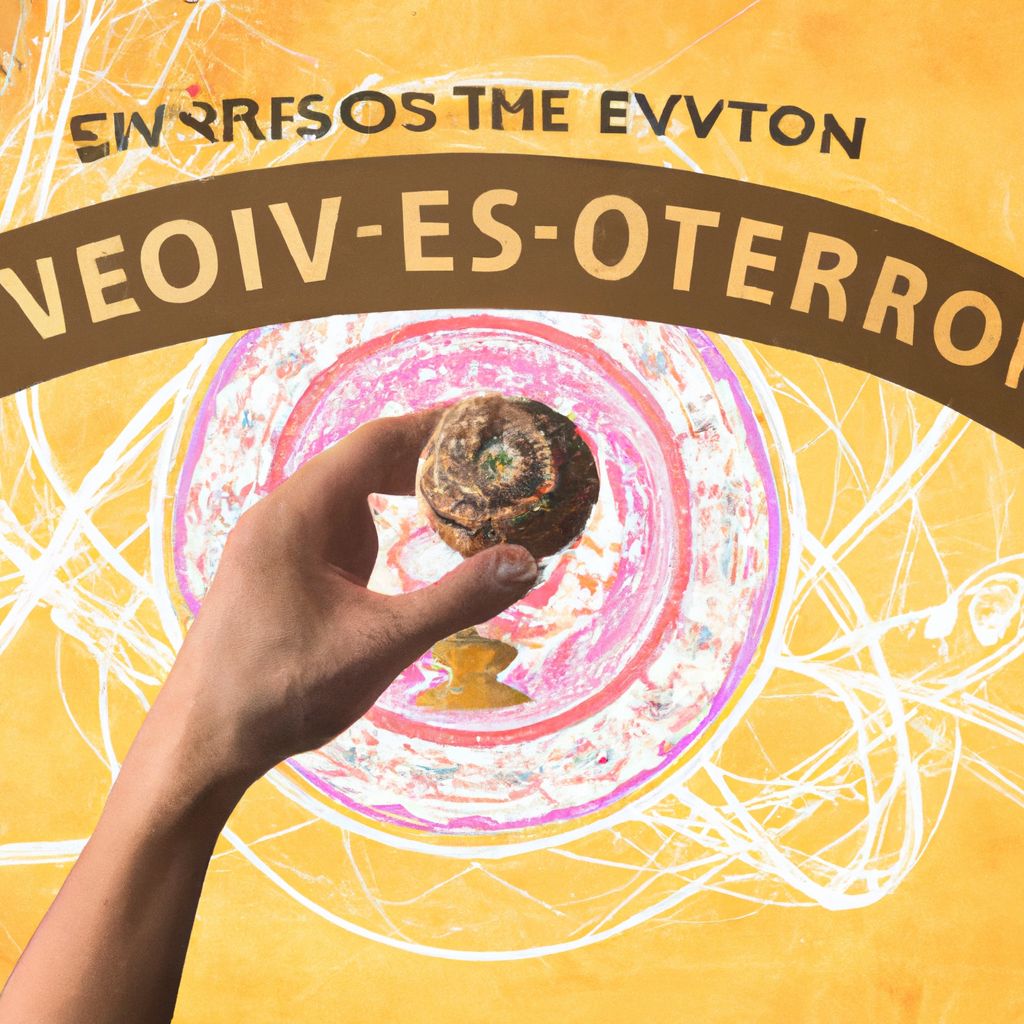- Yoyoing for Fitness: An Introduction
- Yoyoing as a Full-Body Workout
- Mental Health Benefits of Yoyoing
- Social and Community Aspects of Yoyoing
- Yoyoing for All Ages: Accessibility and Inclusivity
- Yoyoing Gear: What You Need to Get Started
- Incorporating Yoyoing into Your Fitness Routine
- Success Stories: Real-Life Benefits of Yoyoing
- Conclusion: The Future of Yoyoing for Fitness
Yoyoing for Fitness: An Introduction

Yoyoing, often perceived as merely a childhood pastime, has evolved significantly over the years. Historically, the yoyo dates back to ancient Greece around 500 BCE, where it was made from materials such as wood, metal, and terracotta. Fast forward to the 1920s, the modern yoyo gained immense popularity in the United States, thanks to Pedro Flores and later Donald F. Duncan Sr., who patented the first yoyo with a slip-string mechanism, allowing for more advanced tricks.
The transformation of yoyoing from a simple toy to a sophisticated tool for fitness is fascinating. This evolution has been driven by technological advancements and cultural shifts, leading to the development of high-performance yoyos made from aircraft-grade aluminum, precision ball bearings, and advanced string materials.
Today, yoyoing is recognized not only for its entertainment value but also for its physical benefits. One might wonder, how can yoyoing be considered a beneficial physical activity? The answer lies in the comprehensive engagement it offers.
Firstly, yoyoing enhances hand-eye coordination and fine motor skills. According to a study conducted by the Journal of Motor Behavior, activities that require precise hand movements, such as yoyoing, significantly improve spatial awareness and reflexes.
Moreover, yoyoing provides a moderate cardiovascular workout. The repetitive motion of throwing and catching the yoyo keeps the heart rate elevated, promoting cardiovascular health. The American Heart Association suggests that even moderate activities can contribute to overall cardiovascular fitness.
Additionally, yoyoing can strengthen the muscles in the forearms, wrists, and fingers. Performing complex tricks requires consistent muscle engagement, thereby building endurance and strength over time. This aspect is particularly beneficial for individuals looking to enhance their grip strength and dexterity.
Furthermore, the cognitive benefits of yoyoing should not be overlooked. Engaging in yoyoing requires concentration, problem-solving, and creativity. Experts from the International Society of Mental Health emphasize that activities demanding such cognitive engagement can improve mental acuity and reduce stress levels.
In conclusion, yoyoing is more than just a nostalgic toy. It is a multifaceted activity that offers significant physical and cognitive benefits. By understanding its rich history and evolution, one can truly appreciate the unexpected advantages yoyoing brings to the realm of fitness.
Yoyoing as a Full-Body Workout

When we think of a full-body workout, yoyoing may not immediately come to mind. However, this engaging activity can indeed target a variety of muscle groups while offering cardiovascular benefits and improving coordination, balance, and reflexes.
Firstly, yoyoing significantly engages the muscles in the arms and shoulders. The repetitive motion of throwing and catching the yoyo activates the biceps, triceps, deltoids, and even the muscles in the forearms. According to a study in the Journal of Strength and Conditioning Research, activities involving repetitive arm movements can lead to muscle hypertrophy and increased endurance in these areas.
The core muscles, including the abdominals and obliques, are also engaged during yoyoing. Performing advanced tricks often requires maintaining a stable center of gravity, which activates the core muscles to help with balance and control. This engagement is similar to the effects seen in activities like yoga and pilates, known for their core-strengthening benefits.
Beyond muscle engagement, yoyoing also provides cardiovascular benefits. The continuous motion keeps the heart rate elevated, offering a moderate cardiovascular workout. The American College of Sports Medicine notes that even moderate-intensity exercises can improve heart health, reduce the risk of cardiovascular diseases, and enhance overall stamina.
Moreover, yoyoing improves coordination and reflexes. The necessity to synchronize hand movements with the yoyo's motion enhances hand-eye coordination. A study published in the Journal of Motor Learning and Development found that activities requiring precision and timing, like yoyoing, significantly improve reflexes and motor skills.
Balance is another key benefit of yoyoing. Many yoyo tricks require maintaining a steady posture while performing intricate movements. This need for stability engages the leg muscles and the core, promoting better balance and proprioception over time.
Furthermore, the cognitive aspect of yoyoing cannot be ignored. The concentration needed to master complex tricks engages the brain, enhancing focus and problem-solving skills. Expert opinions from the International Society of Mental Health suggest that such cognitively demanding activities can contribute to mental resilience and stress reduction.
In summary, yoyoing offers a surprisingly comprehensive workout. It engages multiple muscle groups, provides cardiovascular benefits, and enhances coordination, balance, and reflexes. By incorporating yoyoing into a fitness routine, one can enjoy a fun and effective full-body workout.
Mental Health Benefits of Yoyoing

Yoyoing, while often seen as a physical activity, offers profound mental health benefits as well. From reducing stress to enhancing focus and mental clarity, yoyoing can serve as a powerful tool for mental well-being.
One of the primary mental health benefits of yoyoing is stress reduction. The repetitive and rhythmic motions involved in yoyoing can have a calming effect on the mind. According to a study published in the Journal of Behavioral Medicine, engaging in repetitive physical activities can lower cortisol levels, the hormone associated with stress. This makes yoyoing an effective way to unwind and alleviate stress after a long day.
Moreover, yoyoing enhances focus and concentration. Performing complex tricks requires intense attention and precision, which helps to sharpen cognitive functions. Dr. John Ratey, a renowned psychiatrist, emphasizes in his book Spark: The Revolutionary New Science of Exercise and the Brain that activities requiring focused attention can improve executive functions and cognitive flexibility.
Mental clarity is another significant benefit of yoyoing. The need to stay present and mindful of each movement can help clear the mind of distractions. This aspect of yoyoing is akin to meditation, where the focus on the present moment enhances mental clarity and reduces mental clutter.
The meditative aspects of yoyoing are noteworthy. Similar to practices like Tai Chi or yoga, yoyoing requires a harmonious blend of movement and mindfulness. The rhythmic motion of the yoyo can induce a state of flow, a psychological state where one is fully immersed and engaged in the activity. The concept of flow, introduced by psychologist Mihaly Csikszentmihalyi, is associated with increased happiness and well-being.
Additionally, yoyoing can be used as a form of mindfulness practice. Mindfulness involves paying full attention to the present moment without judgment. The repetitive nature of yoyoing allows practitioners to focus solely on the movement of the yoyo, fostering a meditative state. According to the American Mindfulness Research Association, mindfulness practices can reduce symptoms of anxiety and depression, improve emotional regulation, and enhance overall mental health.
Furthermore, yoyoing can provide a sense of accomplishment and boost self-esteem. Mastering new tricks and techniques requires patience and perseverance, which can lead to a sense of achievement and increased confidence. This positive reinforcement is crucial for mental well-being, as highlighted by the American Psychological Association.
In conclusion, yoyoing offers a multifaceted approach to mental health. It reduces stress, enhances focus, and improves mental clarity. The meditative aspects and mindfulness practice associated with yoyoing further contribute to its benefits, making it a valuable tool for mental well-being.
Social and Community Aspects of Yoyoing

Yoyoing offers not only physical and mental health benefits but also substantial social advantages. The social aspects of yoyoing can significantly enrich one's life, providing opportunities to meet new people, join yoyo clubs, and participate in competitions. These activities foster a sense of community and belonging, which are crucial for overall well-being.
One of the primary social benefits of yoyoing is the opportunity to meet new people. Whether you're practicing in a local park or attending a yoyo event, you'll likely encounter fellow enthusiasts who share your passion. According to a study published in the Journal of Social and Personal Relationships, engaging in group activities can enhance social networks and support systems, contributing to better mental health.
Joining yoyo clubs is another excellent way to tap into the social benefits of yoyoing. These clubs often host regular meetups, workshops, and practice sessions that provide a structured environment for social interaction. Being part of a yoyo club allows you to learn from more experienced players, share tips and tricks, and celebrate each other's progress. This sense of camaraderie can significantly boost one's self-esteem and sense of community.
Participating in yoyo competitions is another avenue for social engagement. Competitions range from local contests to international championships, offering platforms for yoyo players of all skill levels. Competing not only hones your skills but also provides opportunities to connect with yoyo enthusiasts from around the world. According to the International Yoyo Federation (IYYF), participating in competitions can foster a sense of achievement and community, as players often form lasting friendships through these events.
The sense of community and belonging that comes with yoyoing cannot be overstated. Being part of a group with shared interests creates a supportive environment where individuals feel valued and understood. This sense of belonging is essential for emotional well-being. The American Psychological Association highlights that social connections are a key factor in reducing feelings of loneliness and isolation, which are linked to various mental health issues.
Moreover, the inclusive nature of the yoyo community is noteworthy. Yoyoing transcends age, gender, and cultural barriers, making it an inclusive activity that welcomes everyone. This inclusivity fosters a diverse community where individuals can learn from each other's experiences and perspectives, enriching their social interactions.
Additionally, yoyoing can serve as an excellent family activity. Parents and children can bond over learning new tricks and participating in yoyo events together. This shared interest helps strengthen family ties and creates lasting memories. According to a report by the National Center for Family & Marriage Research, family activities that engage multiple generations can enhance family cohesion and emotional bonding.
In summary, the social and community aspects of yoyoing offer numerous benefits. From meeting new people and joining yoyo clubs to participating in competitions, these activities foster a sense of community and belonging. The inclusive and supportive nature of the yoyo community enhances social connections, contributing to overall well-being.
Yoyoing for All Ages: Accessibility and Inclusivity

Yoyoing is a remarkably inclusive activity that transcends age and skill levels, making it accessible to a wide range of individuals. Whether you are a child just starting out, a teenager looking to master new tricks, or an adult seeking a fun and engaging hobby, yoyoing offers something for everyone. This inclusivity is one of the many reasons why yoyoing has remained popular for centuries.
Firstly, yoyoing is suitable for all ages due to its low-impact nature. Unlike many physical activities that may require significant strength or endurance, yoyoing primarily involves the hands and wrists. This makes it an excellent choice for younger children who are developing their motor skills, as well as older adults who may have limitations in their physical capabilities.
For beginners, regardless of age, starting yoyoing is relatively straightforward. Here are some tips to help you get started:
- Choose the Right Yoyo: Beginners should opt for a responsive yoyo, which returns to the hand with a simple tug. Responsive yoyos are easier to control and are ideal for learning basic tricks. As you progress, you can explore unresponsive yoyos, which require a bind return and allow for more advanced maneuvers.
- Learn the Basics: Start with fundamental tricks like the sleeper, walk the dog, and rock the baby. These tricks form the foundation for more advanced techniques and help you develop control and coordination. Numerous online tutorials and instructional videos are available to guide you through these basic tricks.
- Practice Consistently: Like any skill, yoyoing requires regular practice. Dedicate a few minutes each day to practice, and gradually increase your practice time as you become more comfortable with the yoyo. Consistency is key to improving your skills and building muscle memory.
- Join a Community: Consider joining a local yoyo club or an online yoyo community. These groups provide valuable support, advice, and feedback from experienced players. Being part of a community can also keep you motivated and inspired to continue improving your skills.
- Be Patient: Mastering yoyo tricks takes time and patience. Don’t get discouraged if you don’t get it right away. Celebrate small victories and enjoy the process of learning and improving.
Yoyoing is also inclusive for individuals with different physical abilities. Adaptive yoyos and techniques can be used to accommodate various needs. For example, larger yoyos with ergonomic designs may be easier to handle for individuals with limited dexterity. Additionally, some yoyo enthusiasts have developed one-handed or seated yoyoing techniques, making the activity accessible to those with mobility challenges.
Moreover, yoyoing can be tailored to individual preferences and goals. Some may focus on mastering a few basic tricks, while others may strive to compete at an advanced level. This flexibility makes yoyoing a versatile activity that can be enjoyed at any pace and skill level.
In conclusion, yoyoing is an inclusive and accessible activity suitable for all ages and skill levels. By choosing the right yoyo, learning the basics, practicing consistently, joining a community, and being patient, anyone can start yoyoing and enjoy its numerous benefits. Whether you are young or old, a beginner or an experienced player, yoyoing offers a fun and rewarding experience for everyone.
Yoyoing Gear: What You Need to Get Started

Embarking on your yoyoing journey requires some essential gear to ensure a smooth and enjoyable experience. Whether you are a beginner or an advanced user, having the right equipment can make a significant difference in your performance and enjoyment. Here’s a comprehensive guide on the essential gear needed to start yoyoing, including recommendations for different skill levels.
Types of Yoyos:
- Responsive Yoyos:
- Responsive yoyos are ideal for beginners as they return to the hand with a simple tug. These yoyos are easier to control and are perfect for learning basic tricks. Examples include the Duncan Butterfly XT and the YoyoFactory One.
- Unresponsive Yoyos:
- Unresponsive yoyos require a bind return, meaning they don’t come back to the hand automatically. These yoyos are suited for advanced players who want to perform complex tricks. Popular options include the YoyoFactory Shutter and the MagicYoYo N12.
- Looping Yoyos:
- Looping yoyos are designed for looping tricks and are typically used in 2A yoyoing styles. Examples include the Duncan Pulse and the YoyoFactory Loop 720.
Yoyo Strings:
Yoyo strings are an essential component of yoyoing, and there are various types available:
- Cotton Strings: Cotton strings are traditional and provide a soft feel. They are suitable for responsive yoyos but may wear out quickly.
- Polyester Strings: Polyester strings are more durable and less likely to fray. They are ideal for both responsive and unresponsive yoyos. Popular options include Kitty String and YoyoStringLab Ammo.
- Hybrid Strings: These strings combine the benefits of cotton and polyester, offering durability and a soft feel. Examples include Blueprint Strings and YoyoStringLab Type X.
Accessories:
In addition to yoyos and strings, several accessories can enhance your yoyoing experience:
- Yoyo Glove: A yoyo glove reduces friction and prevents string burns, allowing for smoother and faster play. It’s especially useful for advanced users performing complex tricks.
- Yoyo Holster: A yoyo holster or pouch allows you to carry your yoyo conveniently and protects it from damage. Products like the YoyoFactory Holster are popular choices.
- Bearing Lubricant: Lubricating the yoyo bearing can enhance its performance and longevity. Specific lubricants like Yoyojam Thin Lube are designed for yoyos.
- Response Pads: These pads are essential for maintaining the yoyo’s responsiveness. Over time, response pads wear out and need to be replaced. Options like YoyoFactory Response Pads are widely used.
Recommendations for Beginners:
Beginners should start with a responsive yoyo and polyester strings. The YoyoFactory One with Kitty String is an excellent starting combination. Investing in a yoyo glove and holster can also enhance your experience.
Recommendations for Advanced Users:
Advanced users may prefer unresponsive yoyos and high-performance strings. The YoyoFactory Shutter paired with YoyoStringLab Ammo offers a great setup for advanced tricks. Additionally, bearing lubricant and extra response pads are essential for maintaining optimal performance.
In summary, having the right yoyoing gear is crucial for a successful and enjoyable experience. From selecting the appropriate yoyo and strings to investing in useful accessories, these recommendations cater to both beginners and advanced users, ensuring you have everything you need to get started and excel in yoyoing.
Incorporating Yoyoing into Your Fitness Routine

Incorporating yoyoing into your regular fitness routine can add an element of fun and variety while providing a comprehensive workout. Here are some practical tips and specific exercises to help you blend yoyoing seamlessly into your fitness regimen.
Warm-Up:
Begin with a 5-10 minute warm-up to prepare your muscles and joints for exercise. This can include light cardio activities like jogging in place, jumping jacks, or arm circles. Warming up helps increase blood flow and reduce the risk of injury.
Yoyoing Exercises:
Integrate the following yoyoing exercises into your routine to target different muscle groups and improve coordination:
- Basic Throws and Returns: Spend 5-10 minutes practicing basic throws and returns with your yoyo. This activity engages your arm and shoulder muscles while improving hand-eye coordination. Focus on maintaining a consistent rhythm and control.
- Yoyo Walk: Perform the "Walk the Dog" trick for 2-3 minutes. This exercise involves rolling the yoyo along the ground and helps strengthen your forearm muscles. Repeat this trick several times to build endurance.
- Arm Circles with Yoyo: Hold a yoyo in each hand and perform arm circles for 2-3 minutes. This exercise targets your shoulders and upper arms. Alternate between small and large circles to engage different muscle groups.
- Yoyo Squats: Incorporate squats into your yoyo routine. Hold the yoyo in one hand and perform a basic squat while simultaneously throwing and catching the yoyo. This exercise engages your leg muscles and improves balance. Aim for 2-3 sets of 10-15 repetitions.
- Core Twists with Yoyo: Stand with your feet shoulder-width apart and hold the yoyo in one hand. Perform controlled twists from side to side, engaging your core muscles while throwing and returning the yoyo. Do this for 2-3 minutes to strengthen your obliques and improve spinal mobility.
- Yoyo Lunges: Combine lunges with yoyoing to target your lower body and improve balance. Hold the yoyo in one hand and step forward into a lunge while performing a basic yoyo throw. Alternate legs and aim for 2-3 sets of 10-12 repetitions per leg.
Cardiovascular Integration:
To enhance the cardiovascular benefits of yoyoing, incorporate short bursts of high-intensity yoyoing into your routine. For example:
- Yoyo Sprints: Perform 30-second intervals of rapid yoyo throws and catches, followed by 30 seconds of rest. Repeat this cycle 5-10 times to elevate your heart rate and improve cardiovascular fitness.
- Yoyo Jump Rope: Combine yoyoing with jump rope exercises. Alternate between jumping rope and yoyoing for 1-2 minutes each, for a total of 10-15 minutes. This combination provides a full-body workout and boosts cardiovascular endurance.
Cool Down:
End your workout with a 5-10 minute cool-down to relax your muscles and reduce tension. This can include gentle stretching, deep breathing exercises, and light yoyoing to gradually lower your heart rate.
Weekly Routine:
For a balanced workout, incorporate yoyoing into your fitness routine 2-3 times a week. Pair yoyoing with other forms of exercise such as strength training, cardio, and flexibility workouts to ensure a comprehensive fitness regimen.
- Monday: Yoyoing exercises + strength training
- Wednesday: Cardiovascular integration with yoyoing + flexibility exercises
- Friday: Yoyoing exercises + strength training
By following these practical tips and incorporating specific yoyoing exercises into your routine, you can enjoy a balanced and engaging workout that enhances your physical fitness, coordination, and overall well-being.
Success Stories: Real-Life Benefits of Yoyoing

Yoyoing has positively impacted the lives of many individuals, offering significant physical and mental health benefits. Here are some inspiring testimonials and success stories that highlight the diverse experiences and wide range of benefits yoyoing provides.
"I started yoyoing as a fun hobby, but it quickly became a crucial part of my fitness routine. Not only did I notice an improvement in my arm strength and coordination, but it also helped me manage stress better. The repetitive motions are almost meditative, and I find myself more focused and calm after a yoyo session."
John's experience underscores the dual physical and mental health benefits of yoyoing. His journey illustrates how yoyoing can seamlessly integrate into a fitness routine, enhancing strength and coordination while also serving as a stress-relief tool.
"As a retiree, I was looking for an activity that would keep me active without putting too much strain on my body. Yoyoing turned out to be perfect. It keeps my hands and arms engaged, and the community I found through local yoyo clubs has been incredibly supportive. It's a great way to stay physically and socially active."
Linda's story highlights the inclusivity of yoyoing for older adults. Not only does it provide a low-impact way to stay physically active, but it also fosters social connections through community involvement, enhancing her overall quality of life.
"After a sports injury, I was looking for a way to stay active that wouldn't aggravate my condition. Yoyoing was recommended by a friend, and it has been a game-changer. It helps me maintain my dexterity and coordination without putting stress on my injured leg. Plus, learning new tricks gives me a sense of accomplishment and keeps me motivated."
Alex's experience showcases how yoyoing can be adapted to accommodate physical limitations. By focusing on upper body movements, he was able to stay active and engaged during his recovery, highlighting yoyoing's versatility as a fitness activity.
"Yoyoing has been a fantastic family activity for us. My kids and I enjoy learning new tricks together, and it has become a fun way for us to bond. It also helps my children develop their hand-eye coordination and concentration skills, which are beneficial for their overall development."
Sarah's testimonial emphasizes the family-friendly nature of yoyoing. It offers a unique way for families to spend quality time together while developing important physical and cognitive skills, making it a versatile activity for all ages.
"Joining a yoyo club has been one of the best decisions I've made. The sense of community and the support from fellow yoyo enthusiasts have been invaluable. It has not only improved my yoyo skills but also boosted my confidence and social life. I now participate in local competitions and enjoy the camaraderie that comes with it."
David's story highlights the social and community aspects of yoyoing. Being part of a yoyo club and participating in competitions has enriched his social interactions and boosted his confidence, demonstrating the broader benefits of this engaging activity.
These testimonials reflect the diverse ways in which yoyoing can enhance physical fitness, mental well-being, and social connections. From reducing stress and improving coordination to fostering a sense of community and family bonding, yoyoing offers a wide range of benefits that can positively impact individuals of all ages and backgrounds.
Conclusion: The Future of Yoyoing for Fitness

Yoyoing, once seen primarily as a simple childhood toy, has evolved into a multifaceted activity offering numerous unexpected benefits for fitness and fun. From enhancing hand-eye coordination and fine motor skills to providing moderate cardiovascular workouts and strengthening muscles in the forearms, wrists, and core, yoyoing is a comprehensive physical activity. It also offers significant mental health advantages, such as reducing stress, enhancing focus, and improving mental clarity through its meditative aspects and mindfulness practice.
Moreover, yoyoing fosters social connections and a sense of community. It provides opportunities to meet new people, join yoyo clubs, and participate in competitions, enriching social interactions and enhancing overall well-being. The inclusivity of yoyoing makes it accessible to individuals of all ages and skill levels, offering a versatile and adaptable form of exercise.
As we look to the future, several potential trends and advancements could further establish yoyoing as a prominent fitness activity:
- Technological Integration: Advancements in technology could lead to the development of smart yoyos equipped with sensors to track performance metrics such as speed, spin time, and trick completion. These data-driven insights could help individuals optimize their yoyoing routines and track progress over time.
- Virtual Communities and Competitions: The rise of virtual platforms could expand the reach of yoyoing communities and competitions. Online tutorials, virtual meetups, and remote competitions would allow yoyo enthusiasts to connect and compete globally, fostering a larger and more inclusive community.
- Fitness Programs and Classes: As the fitness benefits of yoyoing become more widely recognized, we may see the introduction of structured yoyoing fitness programs and classes. These programs could be tailored to different skill levels and fitness goals, offering a new and engaging way to stay active.
- Adaptive Yoyoing Techniques: Continued innovation in adaptive yoyoing techniques and equipment could further enhance accessibility for individuals with physical limitations. This inclusivity would ensure that everyone, regardless of physical ability, can enjoy the benefits of yoyoing.
- Research and Advocacy: Increased research into the physical and mental health benefits of yoyoing could provide a stronger evidence base for its inclusion in fitness and wellness programs. Advocacy efforts could promote yoyoing as a legitimate and beneficial form of exercise, encouraging more people to give it a try.
In summary, yoyoing offers a wide range of benefits for fitness and fun, making it a valuable and inclusive activity for individuals of all ages. As technological advancements and increased awareness continue to shape the future of yoyoing, its potential as a fitness activity will likely grow, offering even more opportunities for physical, mental, and social enrichment.



